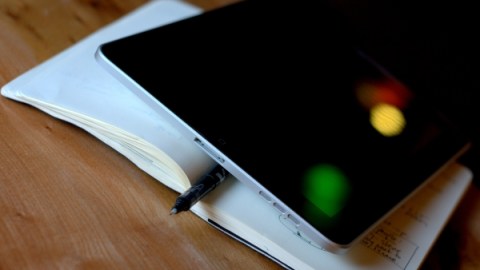Getting closer towards the Digital Backpack

In a report published in January 2011, 75% of the students surveyed said that they would prefer printed textbooks over digital textbooks. About one week ago, the Kno app for iPad was the top Back to School application in the iTunes Store with one download every 8 seconds.
Another interesting piece to the puzzle is the growing phenomenon of textbook piracy and a survey by the U.S. Public Interest Research Group found that only three out of ten students were still buying textbooks.
I think, it is worth looking back at what has happened within the past eight months.
Back in January Kno was still planning to launch a two screen tablet device for about $900 if I remember the price-point correctly. In February we learned that Kno would be concentrating solely on the software aspect of the business from now on and trying to outsource the hardware manufacturing part. Eventually Kno launched an application for the iPad, featuring more than 100k textbooks.
A couple of weeks ago Chegg, the leading textbook rental company decided to reshape its business and evolve into a one-stop-shop for students. Chegg users can now not only rent textbooks via the newly designed platform but also connect with other students, share notes or book tutoring sessions. Chegg also introduced its own e-textbook store, and students who order a physical textbook via the platform have access to a digital version while waiting for their textbook to be delivered.
Inkling that follows the approach of deconstructing physical textbooks before reassembling it into a new, interactive experience has also been able to attract new funding and publishers.
Online retailers like Barnes&Noble and Amazon also joined the digital textbook space with offers based on their e-reading devices. It will be interesting to see what role the new Kindle tablet is going to play six months from now.
Last but not least ScrollMotion, one of the leading application and digital magazine developers entered the digital textbook market through a project with publisher HMH. The company that created digital versions of Esquire and the Oprah Winfrey magazine turned the Algebra 1 textbook into an interactive learning application. In a recent district test
“… the students in the iPad courses demonstrated a proficiency rate of 90.5 percent while the students in textbook classes scored only 60 percent.” Source
Though the quality of the digital textbooks available today still ranges from mere pdf versions to elaborate applications with interactive and social features, the choice is already large enough to make it a viable alternative.
It should be mentioned that the price point of e-textbooks is not considerably lower yet and one cannot resell the “used” digital version of a textbook to make up for new ones in the upcoming semester. On the other hand, the more elaborate versions include graphic calculators and extended content that students needed to purchase separately when buying a classic textbook.
All in all, I think the advantage of the digital backpack, e.g. iPad or other tablet, is that it has the chance to be the only device a student needed throughout the day. Digital textbooks are only one part of the tool set that can be installed on a tablet. Everything from note taking to flashcard learning, from interacting with peers to watching video lessons is already possible today. Besides being an e-reading device and notepad, tablets can be used to record lectures or have video chats with peers and tutors.
The remaining problem is that not all applications are available on all the different platforms. And there are at least four major players in the market: iOS, Android, Amazon Kindle and B&N Nook. Right now, students have to pick one of those based on the textbooks and applications available.
Picture: Morguefile user dtl





